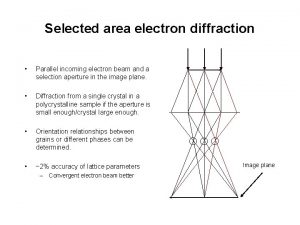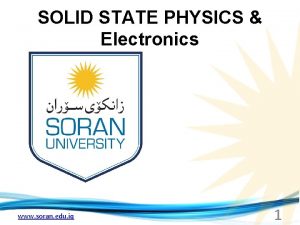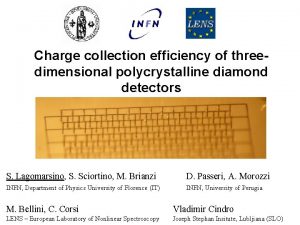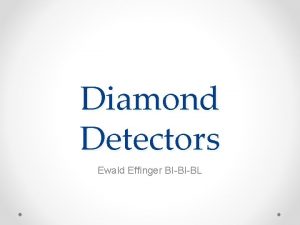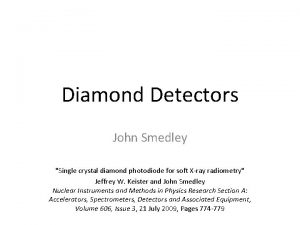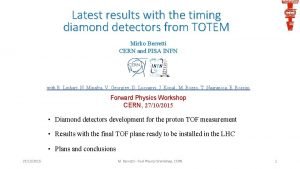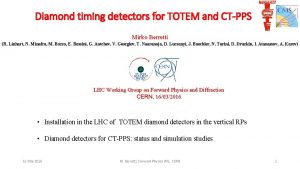Polycrystalline Diamond Detectors for Fast Timing Applications at









- Slides: 9

Polycrystalline Diamond Detectors for Fast Timing Applications at FAIR Lianne Scruton, University of York • Motivation behind LYCCA at FAIR • Diamond detector design • Initial tests at Texas A&M University • Current work

Motivation � LYCCA : Lund-York-Cologne-Calorimeter shall be placed at the end of Super-FRS at FAIR as part of HISPEC campaign. � Based on CATE calorimeter used for RISING campaign, with the addition of time-of flight (TOF) measurements for better fragment identification. 52 Fe 53 Fe 51 Fe 50 Fe LYCCA Wall Detectors Target Detectors Super-FRS � Simulations by Mike Taylor show that TOF detectors require resolution of at least 100 ps, ideally less than 50 ps.

The Design � Wafers of polycrystalline diamond purchased from Diamond Detectors Ltd measuring 20 x 20 mm, and 300µm thick. � Contacts fabricated at University of Surrey. Front contacts: divided into four strips for lower capacitance Back contacts: full pad for grounding purposes PCB: specially deigned for high frequency signals and impedance matched

Texas A&M University � Detectors positioned in transmission geometry so that 500 Me. V and 800 Me. V of energy was deposited into front and back detectors respectively. High Frequency Cables 40 Me. V/u Ar 40 m 15 m Leading Edge Discriminator found to produce best results

Results 95 ps resolution per detector FWHM = 104 ± FWHM = 134 ps

Results Ne 20 15 mm Flight Path O 16

Results O 16 Ne 20 30 mm Flight Path

Current Work Data taken at University of Birmingham, using scattered 50 Me. V 3 He beam. 14. 6 p. F 8. 11 p. F 1. 95 p. F Rise time < 0. 5 ns (ns)

Thank You for Listening Collaborators: M. A. Bentley, B. S. Nara Singh and S. P. Fox University of York, UK F. Schirru and A. Lohstroh University of Surrey, UK L. Trache, A. Banu and rest of RET Group Cyclotron Institute, Texas A&M University M. Freer, D. Parker and Cyclotron staff University of Birmingham, UK Thanks to M. J. Taylor and D. Bloor figures in slide 2

